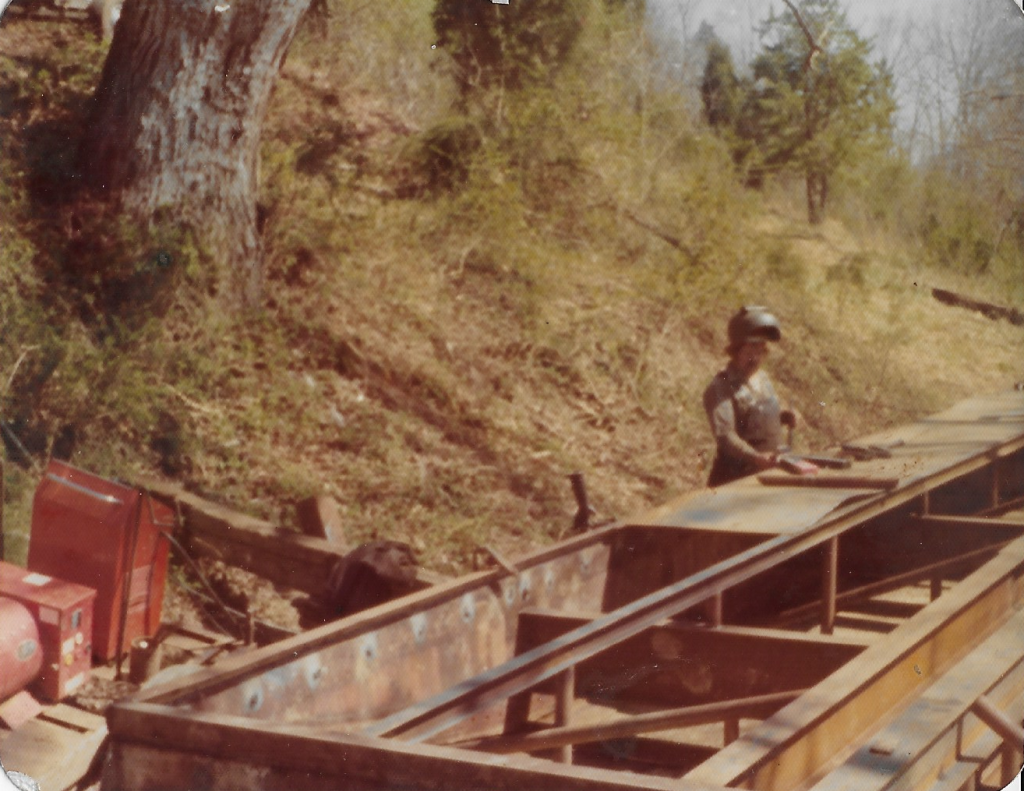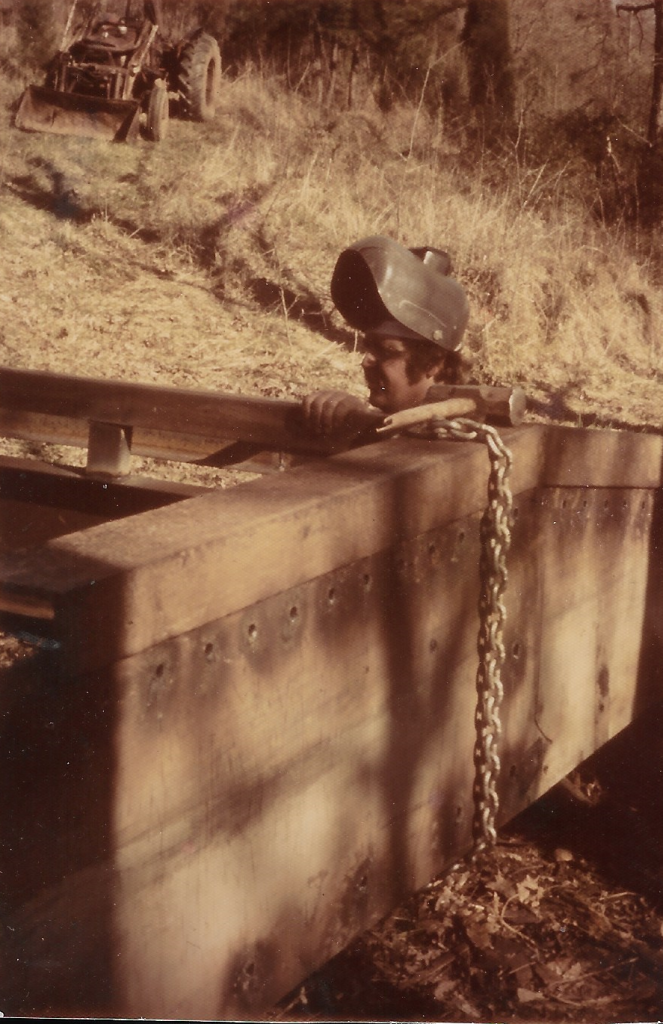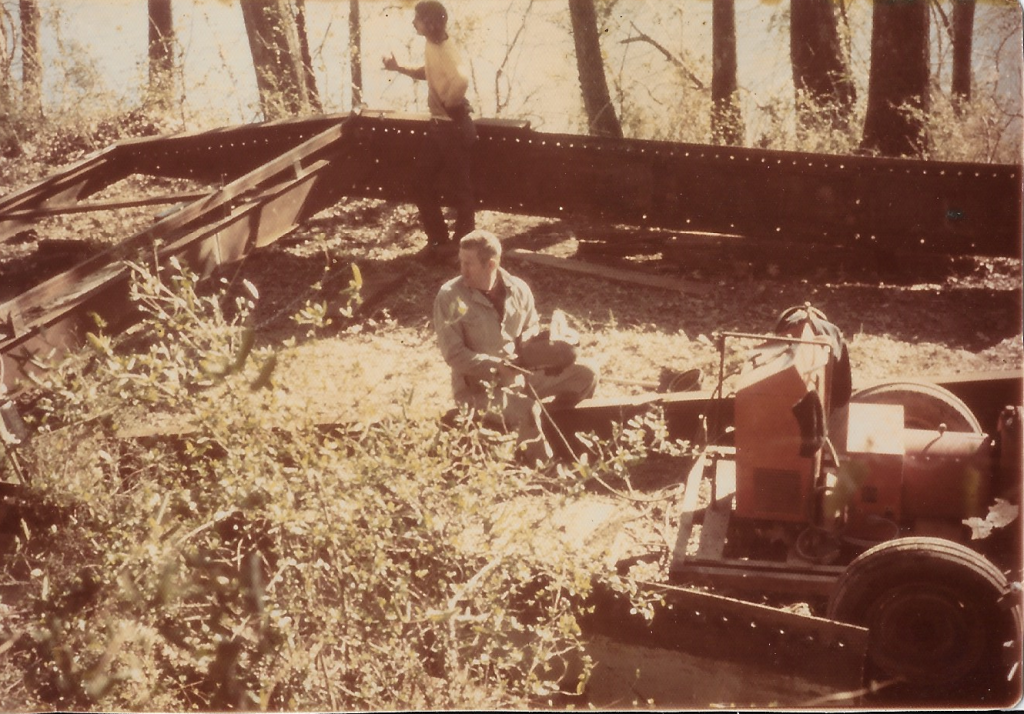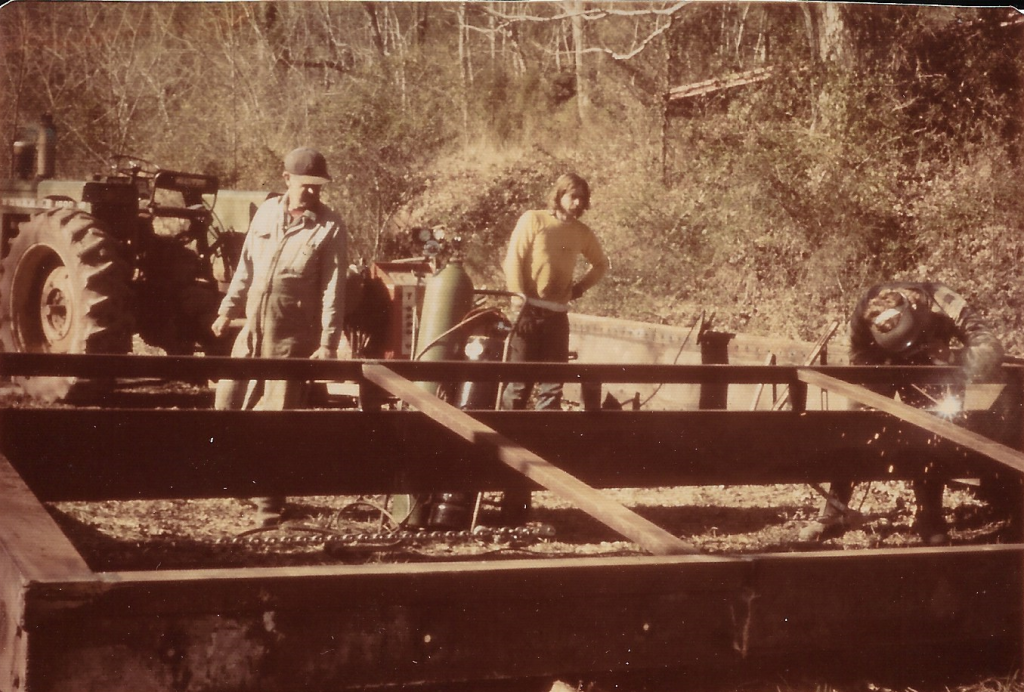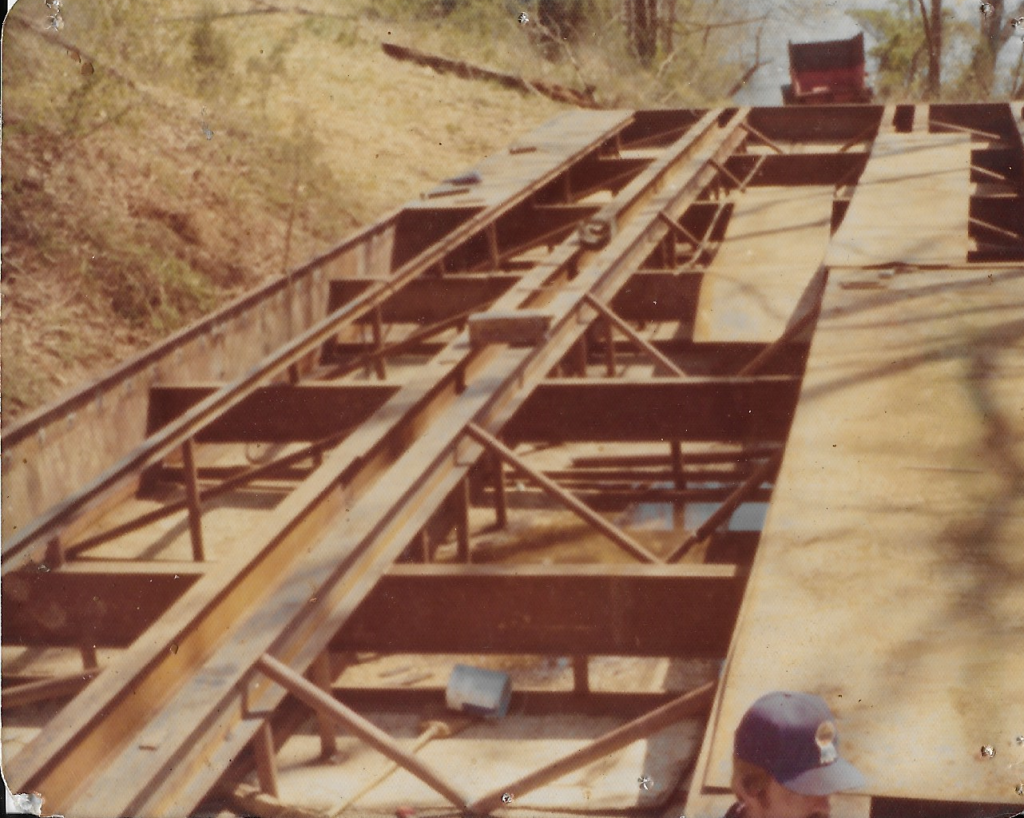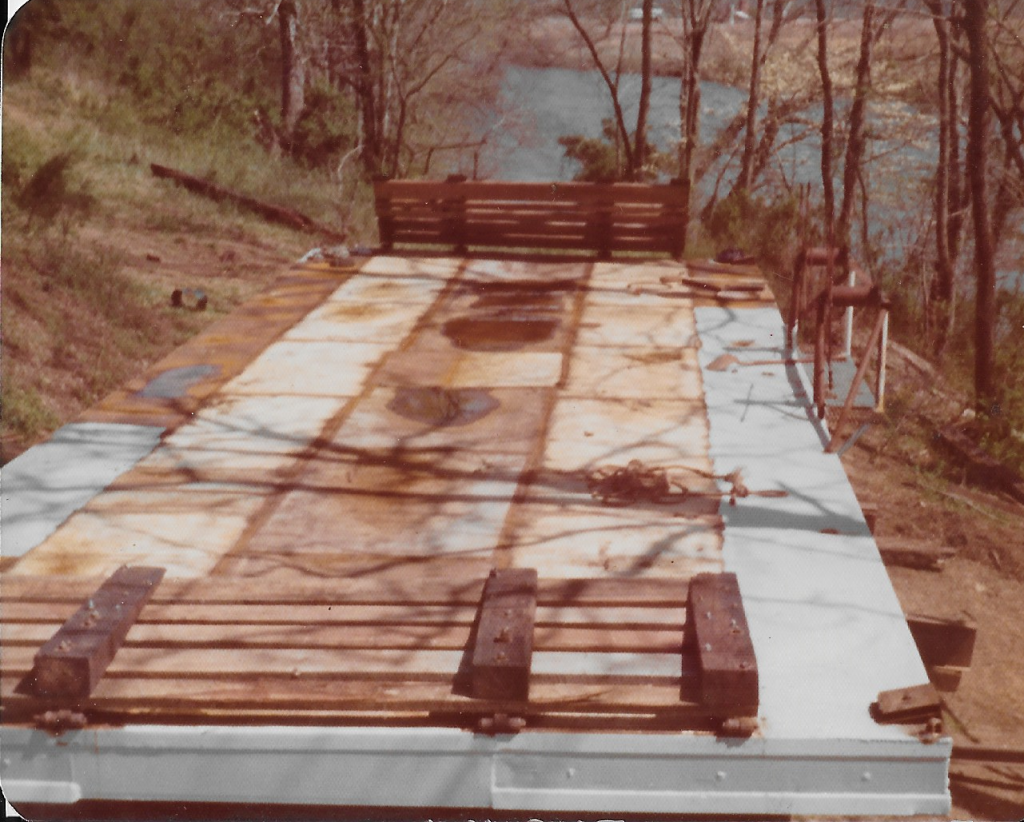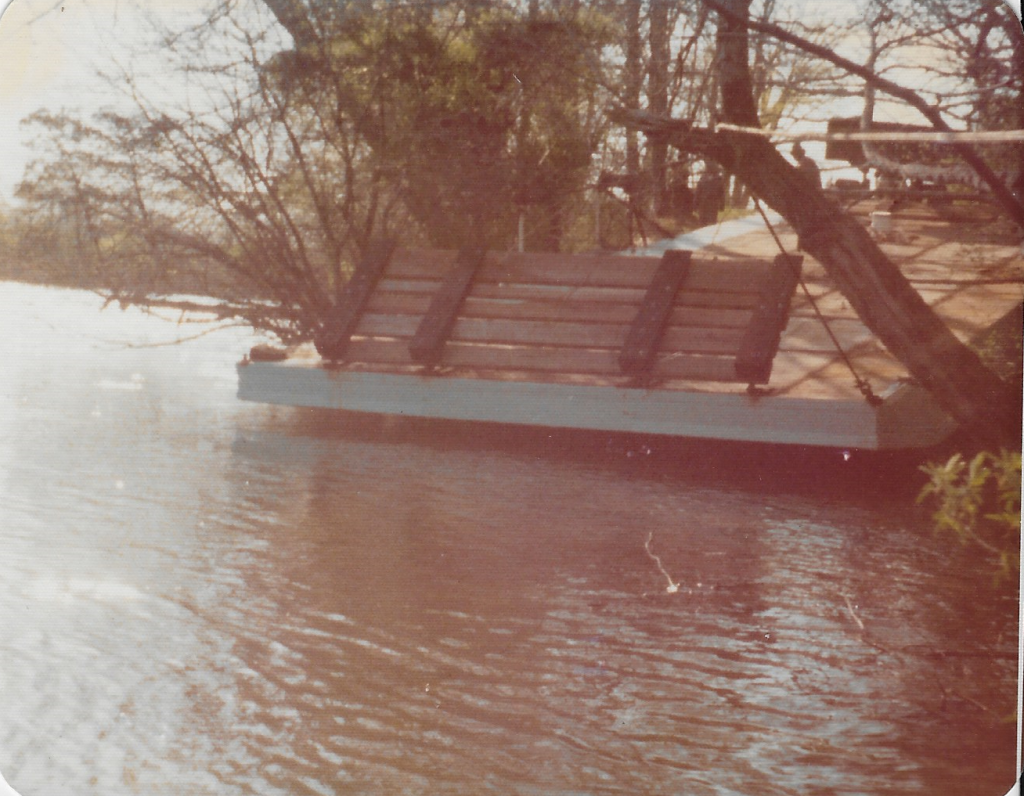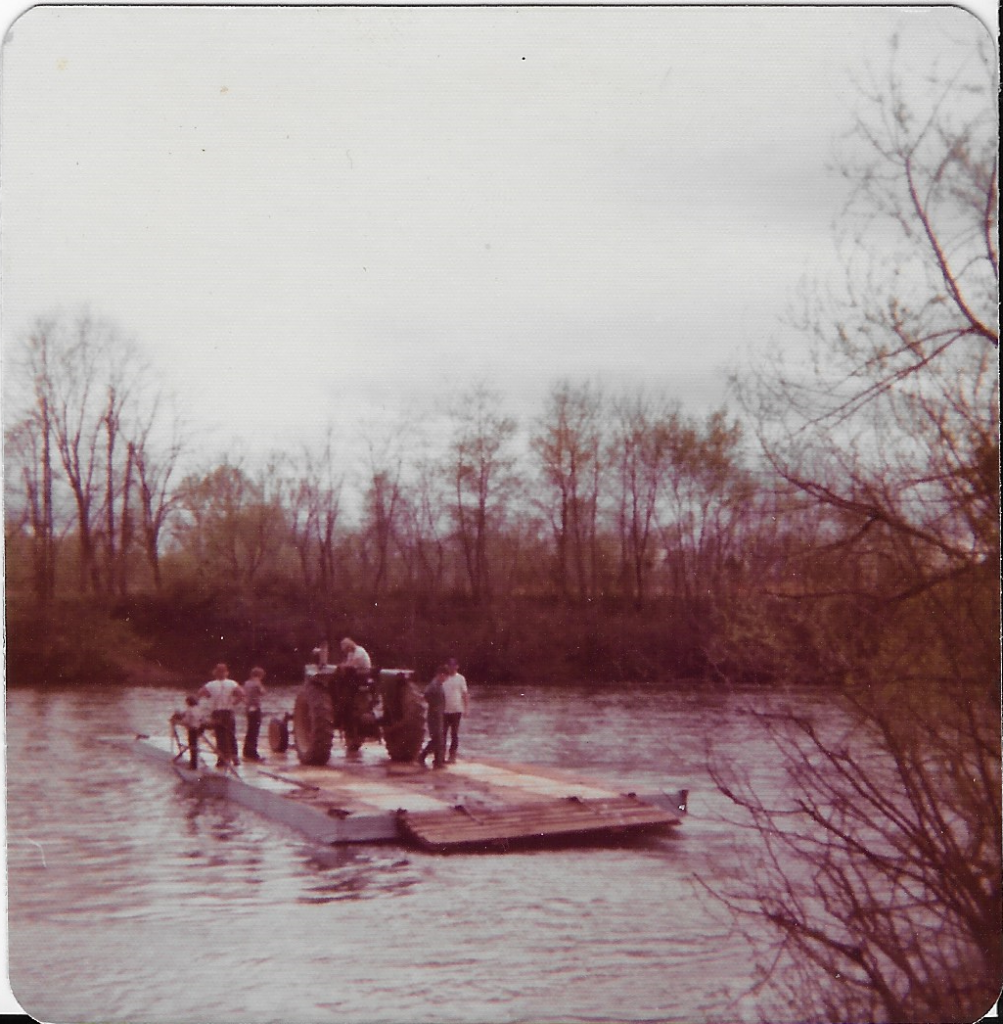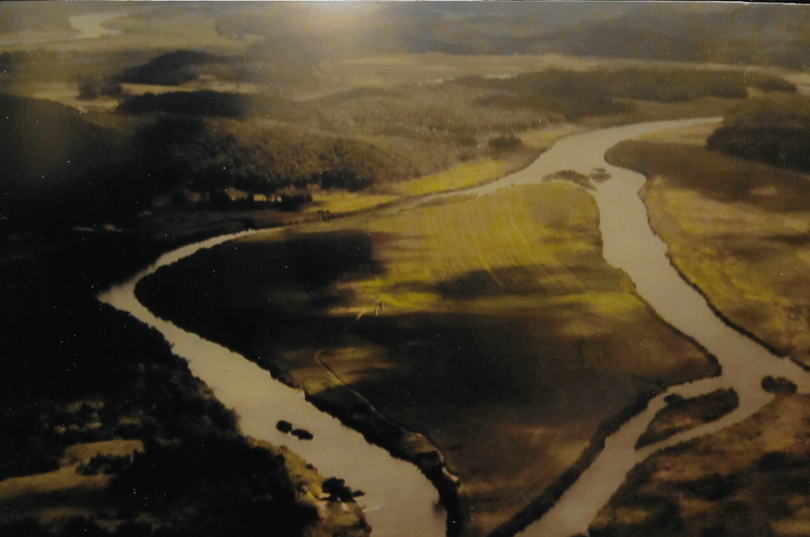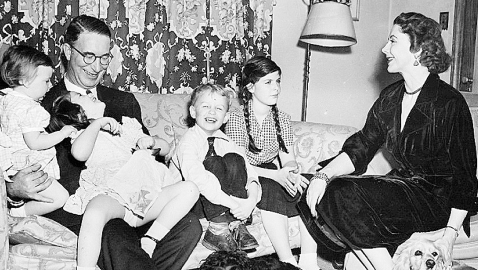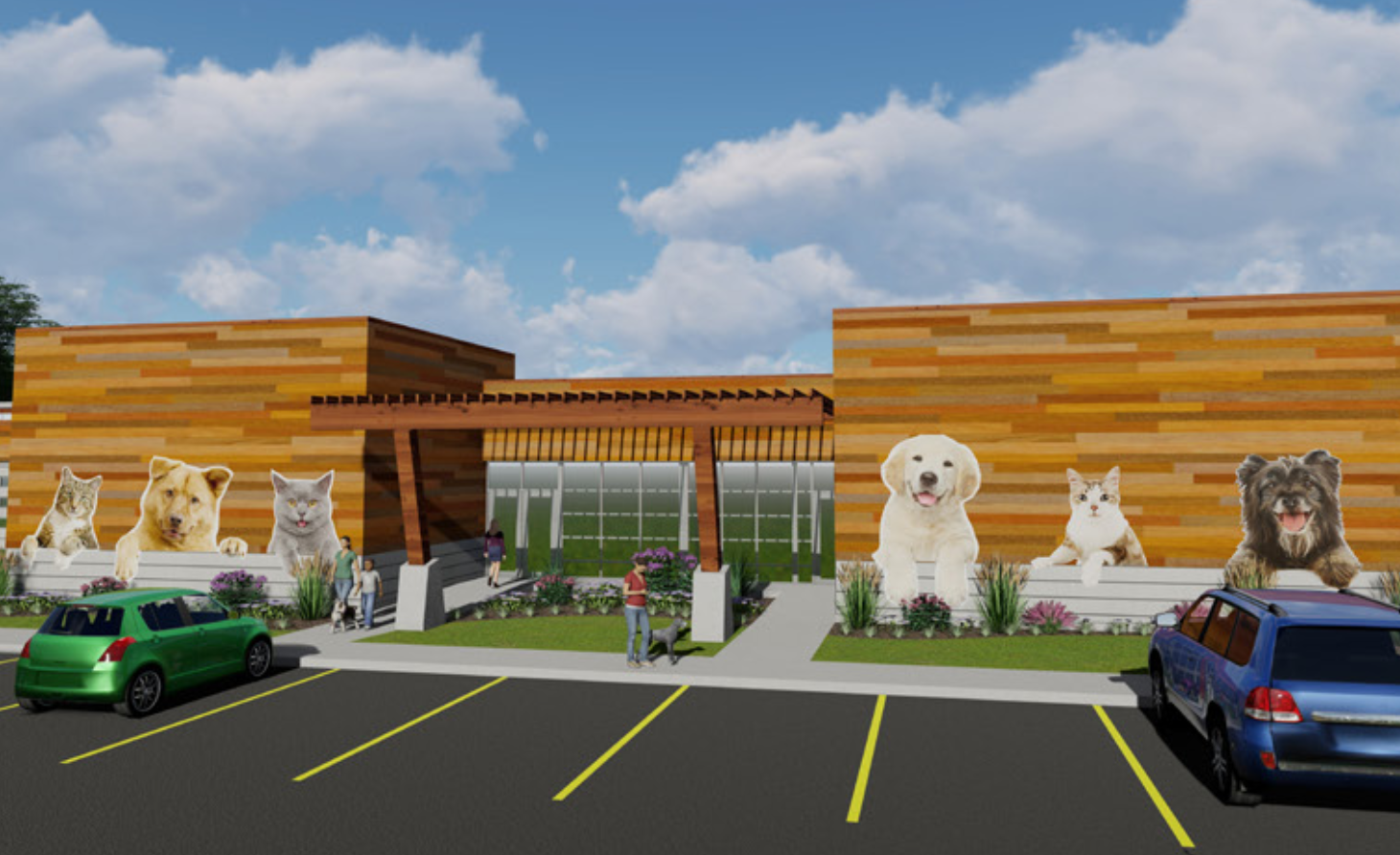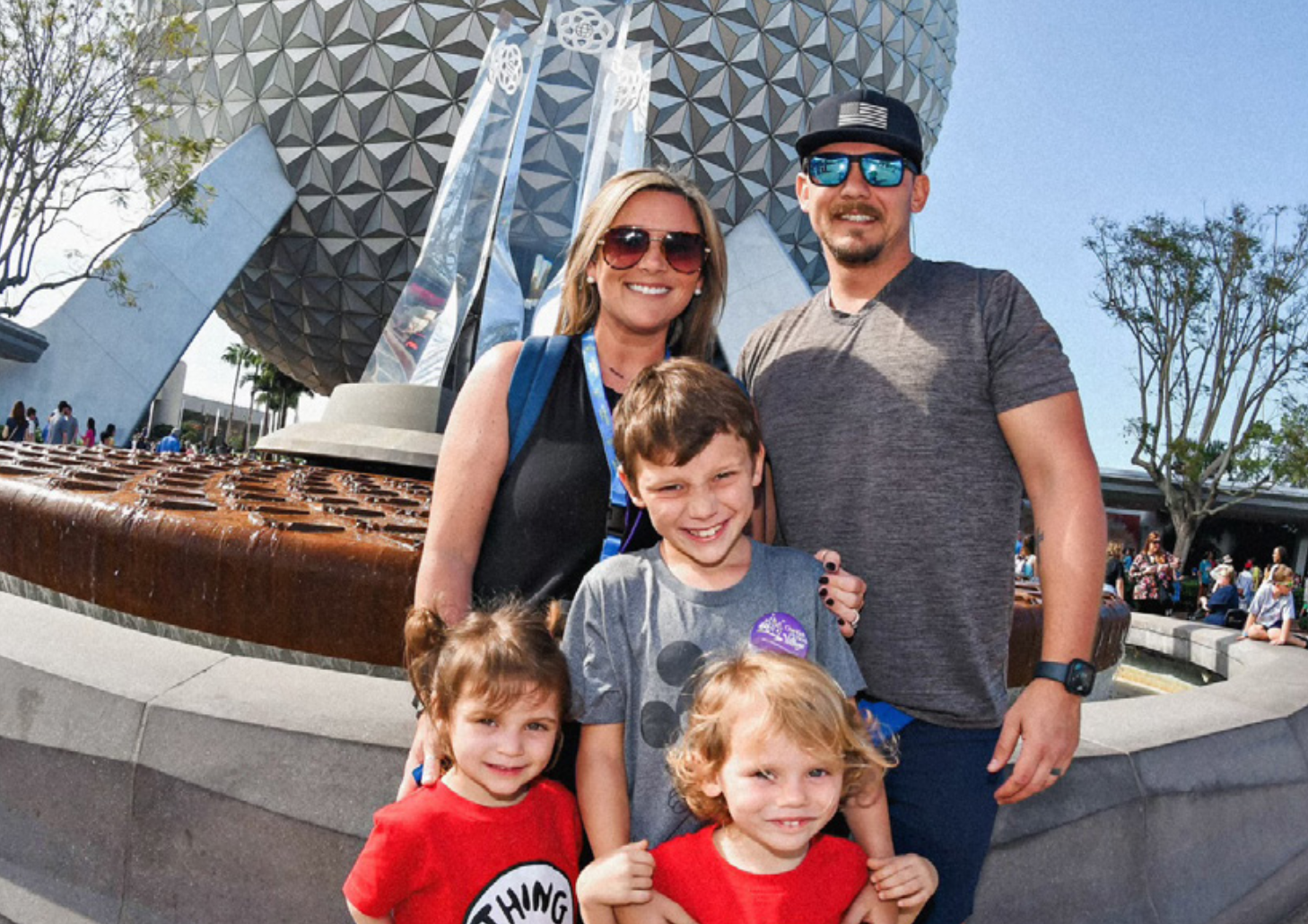There’s something magical about the past. We know that any romantic “simpler era” is as much a product of our nostalgia as it is historical fact. Yet something calls out to us from the ruins of ancient cities, artifacts of old eras, or, more recently, the grainy, slightly-damaged film of old cameras and the muted hues of old photographs.
I sit with Chad Chester and watch his three-minute silent home film from 1974. The setting is Carson Island also known as Calloway Island—a 250-acre, diamond-shaped slice of class one farmland in Monroe County. In an old photo, you can see the Little Tennessee River split to encircle the small island.
Chad’s shaky, handheld footage shows a truck hauling tons of lime. Chad and his family load it onto their home-built ferry and let the current slowly pull them towards Carson Island where they will spread the lime over the soil to raise its pH and make it more suitable for crops.
To Chad, this island is a special place. In 1974, it was owned by the TVA who planned to build Tellico Dam which would flood the island and a lot of other land—but the dam was still years away at this point. It was excellent farmland, which drew the attention of Chad and his family. They decided to rent the island from the TVA in 1974, farming it for however long it took to complete the dam. They hoped that it would be enough time for them to make a profit. It would turn out to be a wise investment.
Chad; his father, Fredric; and his cousins, Eric and Joe, ended up farming the land for four years from 1974 to 1979, when the dam was completed. They primarily grew corn that they used to feed their livestock, but they also grew soybeans, wheat, and hay. Chad said it was the best land he had ever farmed.
One of the biggest challenges was building the massive 55-foot by 18-foot by 3-foot steel ferry to haul farm equipment and supplies across the frigid river. Thankfully, they didn’t have to start from scratch, but were able to enlarge the frame of an older ferry and add a steel bottom and a steel top. For practical reasons, they had to build most of it upside down. When they were done with the bottom, they had to spend all day flipping the tremendous hunk of metal which required great planning and care.
Chad’s most cherished memory of the place was in March of 1976 when he called his girlfriend, Margaret, and asked her if she wanted to ride the ferry to Carson Island. The current was good, and they soon arrived at the island, where Chad led Margaret to a large pecan tree along the riverbank. There, under the light of the full moon, he took her hand and asked her to marry him—the answer was yes!
In 1979, the island was flooded; it has become part of the riverbed. For a long time, Chad didn’t think that there were any aerial images of the island in existence. That is until one day when he and his wife were having some new flooring put down in their home.
One of the workers said, “I know you. I know your mom and dad, and I know the story about the ferry.”
“Really?” Chad asked.
“Yeah, your dad told me all about it. I know where there’s an aerial photo of the island.”
Chad’s eyes widened in surprise. He asked about the photo and learned it was hanging in a restaurant in Madisonville, so Chad stopped by, and sure enough—there it was. The photographer’s email was in the corner, and Chad reached out to him to get a copy of the image. He learned that the photographer, knowing the land was about to be flooded, had taken many pictures of the Tellico Project. He had stored all the negatives, but when he pulled them out, they had all been damaged. All except one—the picture of Carson Island. Chad bought three large prints of the image, one for himself and one for each of his sons.

The ferry is visible along the bottom, near the middle.
Carson Island was the backdrop for many happy memories. Maybe we all have places like that—an old church, a childhood home that has since been torn down—places that hold a special magic for us, a magic all the more potent if it is somewhere to which we can never return.
Something calls out to us from the ruins of ancient cities, artifacts of bygone eras, and the muted hues of old photographs. They call to us not just because of their beauty but because they represent that which is irretrievably beyond our reach—the past. Places like Carson Island show us the power of the past and of nostalgia, joyous yet knife-like, painful, happy, and beautiful—a longing for a place that no longer exists.
Watch the video of the ferry at: https://vimeo.com/723441839/77eeeb97a9
